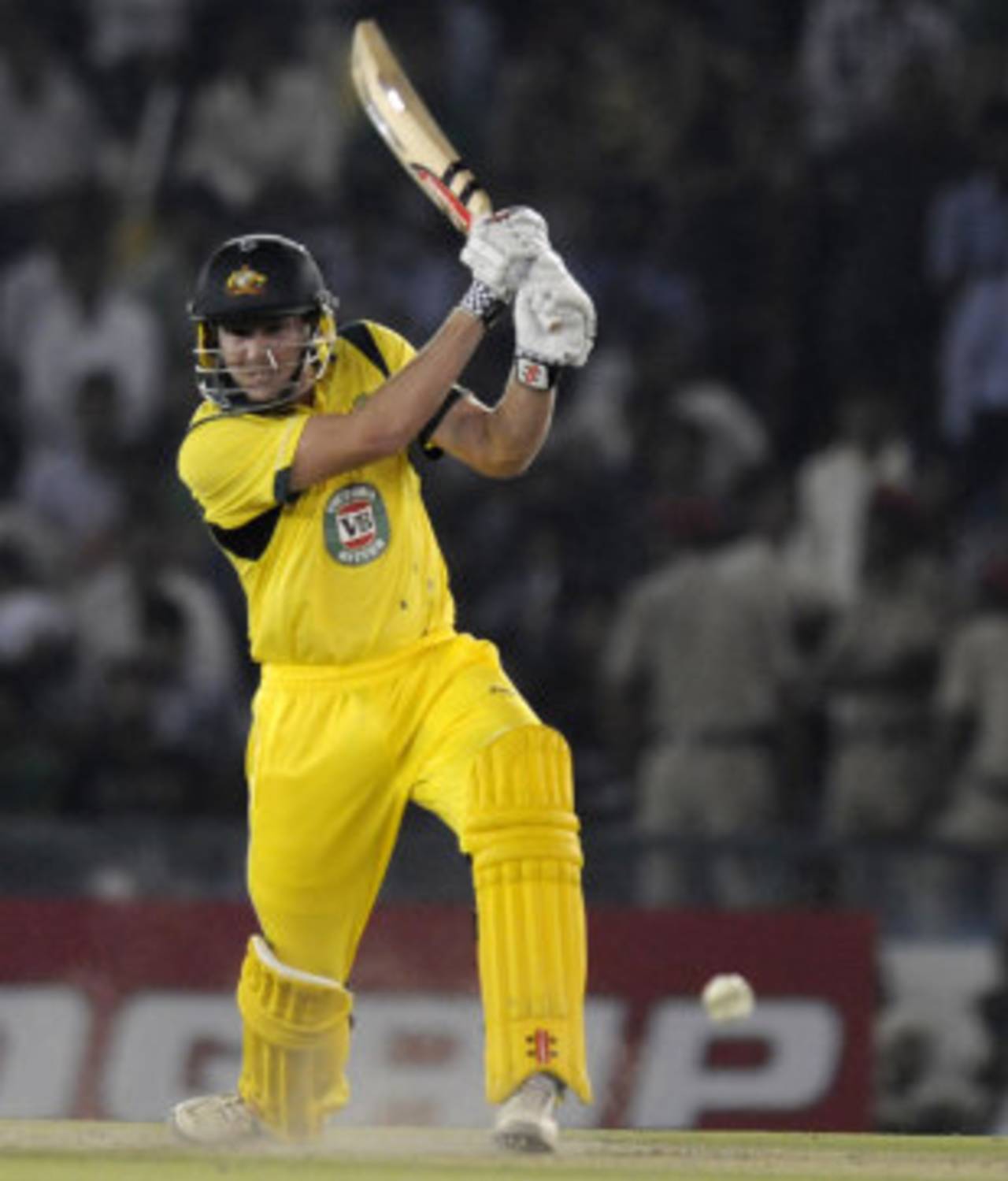The first two days of the Kolkata Test has been a pretty good contest between bat and ball, but the three weeks preceding that was - at least in India - largely about batsmen smashing bowlers to all parts of the ground, and over it. The
ODI series between India and Australia was a non-stop spectacle for the fans who wanted to see a deluge of fours and sixes, but for others who wanted a more even tussle it was a bit of a bore. There were nine instances, in 11 innings, of teams scoring more than 300, of which five totals exceeded 350. Both are records in a bilateral series. There was a barrage of fours and sixes, no total was safe, and Vinay Kumar became the first bowler to concede 100-plus runs and yet finish on the winning side in an ODI match. (For more details on all the records from that series,
click here.)
The flat nature of the pitches and the quick outfields exacerbated the plight of the hapless bowlers and brought the focus on the
new rules which were introduced into ODI cricket on October 30, 2012, especially the stipulation that only four fielders would be allowed outside the circle in the non-Powerplay overs. The earlier limit had been five, and this 20% reduction was one of the main reasons attributed for the unusually high scores. While this batting fest was on, there was
another series going on which wasn't impacted similarly by the rule change: in the first ODI between Pakistan and South Africa in Sharjah, South Africa scored 183 and then restricted Pakistan to 182 to snatch the
low-scoring thriller by a run. In the second match, Pakistan scored only 209 and yet won by 66 runs.
Obviously, this new rule hampers the fielding side in perfect batting conditions - Bangladesh
chased down a target of 308 against New Zealand last week - but has it completely changed the balance of power in ODIs? Have run rates significantly increased worldwide in ODIs over the last year, or is it restricted to a few regions, where the new rule seems to have benefited batsmen unfairly? Here's what the numbers say.
What stands out in the table below, which looks at ODI averages and run rates since October 30, 2012 and the previous four years, is how closely the numbers are stacked up each year during this period. In the last year since the rule change the rate is 5.05; in the two years before that they were 5.03 and 5.07. Between October 30, 2012, and October 12, 2013 (before the start of the India-Australia ODI series), it was 4.98 in
114 matches. Clearly, it appears that overall the rule change hasn't impacted run rates at all in the last year.
The scoring rates in each country over the last three years also hasn't changed drastically. Since October 30, 2012, it's 5.59 in India, which is marginally more than the rates between October 2011-2012, and October 2010-2011. In other countries the results are mixed: the rates have diminished in Australia and in the UAE (though the UAE sample size in 2010-11 was only four matches). The rate in South Africa is less than the previous, but more than it was in 2010-11. Admittedly, some of this also depends on the strength of the teams which tour those countries in a given year, but the overall spread tends to suggest that there hasn't been a significant change in scoring rates in most countries since the introduction of the new rules. (
Click here for Kartikeya Date's piece in the Cordon, which shows that scoring rates go up in matches involving India.)
There is also a fear that a combination of two new balls per innings and fewer fielders outside the circle will
destroy the effectiveness of spinners in ODIs. The table below, though, again shows little to differentiate between the bowling averages and economy rates for spinners and fast bowlers in the last three years. Since the latest rule change, spinners have averaged 4.69 runs per over, which isn't very different to the economy rates in the previous two years. In matches played in India, the rate has increased from 4.74 in the previous year, and 4.86 in 2010-11, to 5.05 this year, but then that's also because the overall run rates in India have gone up owing to the run-glut in the India-Australia series.
In the India-Australia series, one of the trends that was noticeable was the relatively slow scoring rates during the mandatory Powerplay overs: it was only 5.33, compared with 7.85 in the batting Powerplays and 6.86 through the rest of the innings. The lack of fielders in the outfield through the non-Powerplay overs meant that the early restrictions weren't as vital to the batting teams.
In all ODIs played since October 30, 2012, the run rate in the mandatory Powerplay overs has dropped to 4.25, from 4.75 in 2010-11 and 4.52 in 2011-12. Correspondingly, the rates have gone up a bit in the last ten, to 7.27 in the last year from 6.69 in the previous year.
Overall, though, there's little change in the scoring rates since the four-fielders-outside-the-circle rule came into effect. There were bizarre numbers in the India-Australia series, but the bowlers will hope that was a one-off. Or perhaps it's taken the batsmen so long to wisen up to the opportunities that have opened up with the rule changes.
